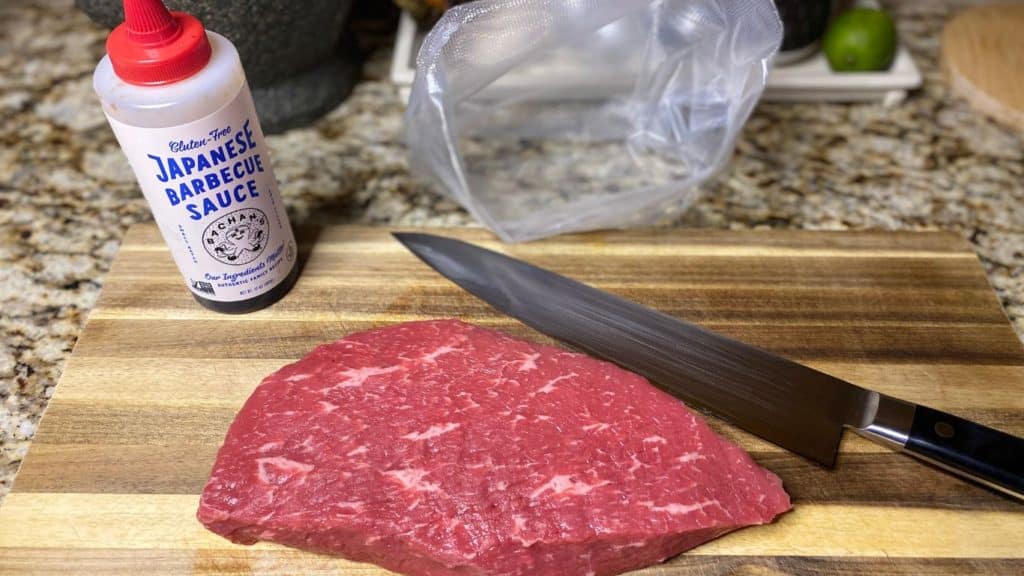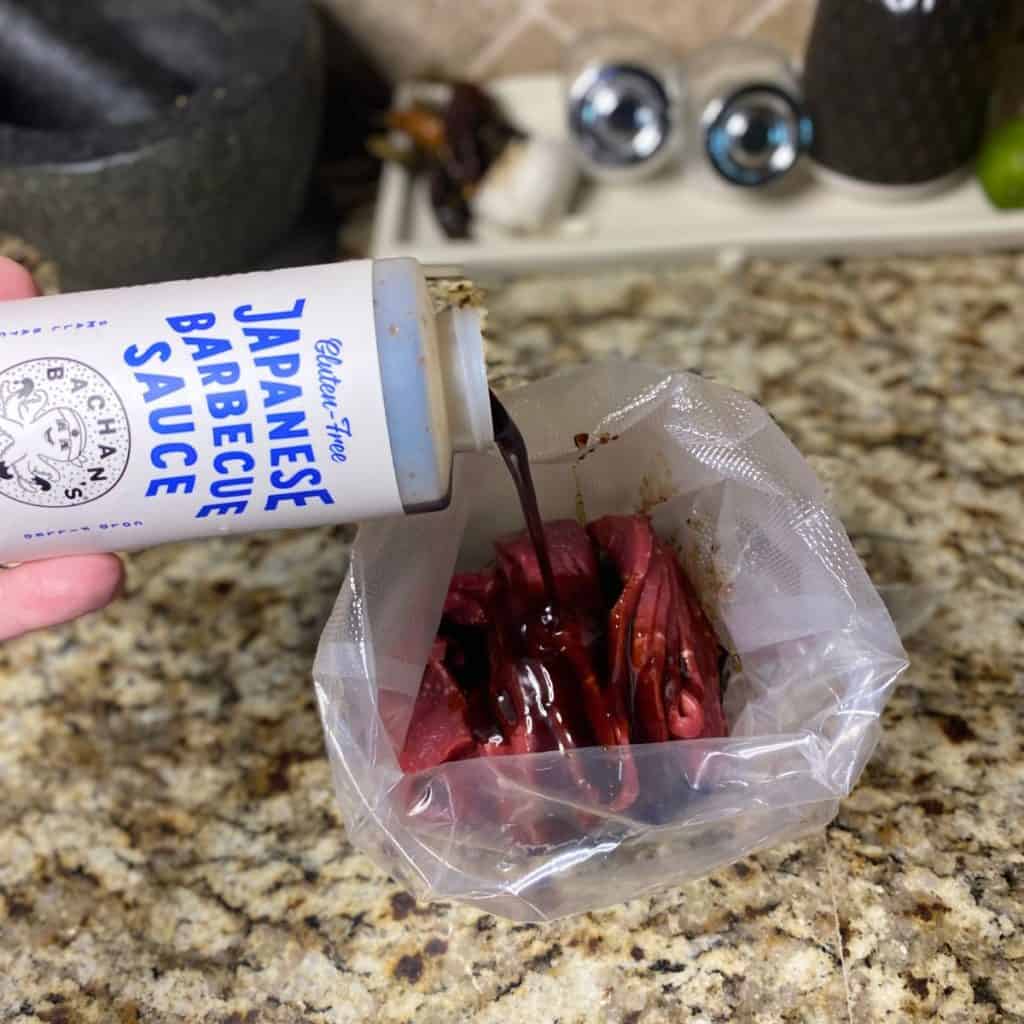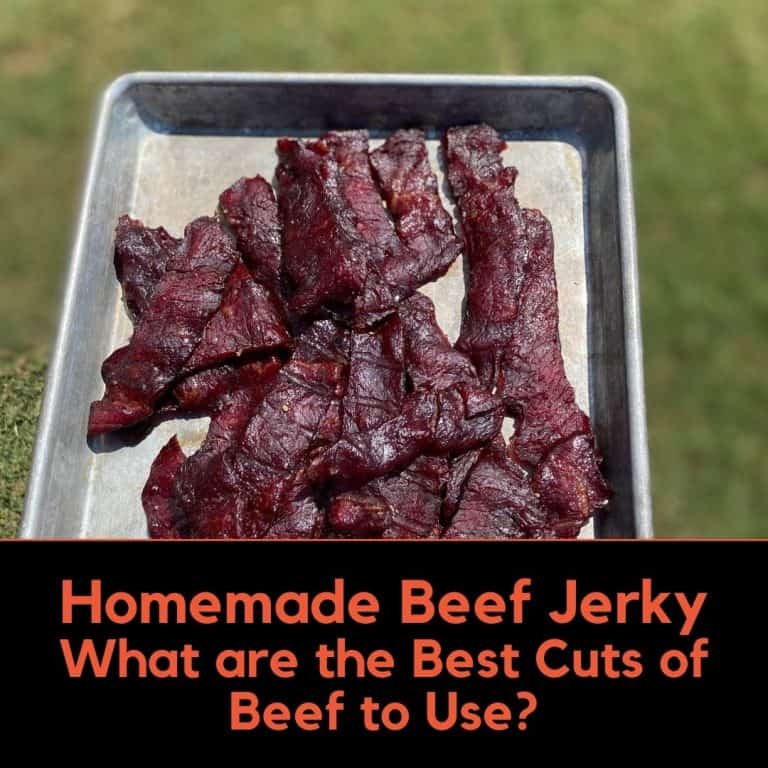What is the Best Cut of Beef for Beef Jerky?
20% off first coffee subscription order with code COFFEECLUB20
Types of Meat:
Top Round Roast (Best Choice)
A great choice, and most popular choice, for making beef jerky at home. You will most likely see this labeled as London Broil.
This economical cut has just the right amount of intramuscular fat for making homemade beef jerky. This is my pick for best cheap cut for beef jerky.. and it makes the best jerky. The top round is also the favorite amongst commercial jerky makers if that tells you anything.
Bottom Round
The bottom round roast is a lean meat and a great option for homemade jerky. It will not be as tender as the top round, as it lacks the marbling, though will still make a flavorful jerky.
Eye of Round
The eye of round roast, and round steaks, also have a very low-fat content but are going to be the least tender of the group not to mention the least flavor. If this is what you have to work with then I would suggest a bold marinade for this type of meat. The eye of round probably has the least “beefy” flavor of any part of the cow. This cut is one of my least favorite when I’m shopping for meat for beef jerky.
Flank Steak
The beef flank steak is a popular option for beef jerky. It will be a more flavorful cut compared to the round cuts, but will not be quite as tender. That and the flank steak is going to be much more expensive which is a deal breaker for me. If you find it on sale than its a good option for beef jerky meat.
Brisket
A beef brisket flat when dried is called Cowboy jerky. I’m not talking about the overcooked smoked brisket you’ve had either. Cowboy jerky is made from thin strips of Brisket, usually the flat, and is another great choice for making beef jerky if money is not a factor for you. If I was able to find a brisket flat on sale and with all the fat trimmed off then this would be a strong contender for me.
Skirt Steak
For beef jerky? I’m not a fan for a few reasons. First, it has too much intermuscular fat for me to want to deal with. Not thick fat caps rather it has small fat pockets that must be trimmed away. Second, once you slice it across the grain it will make for a pretty thin strip of meat. Save the skirt for your fajitas, it’s not worth the time or money to make jerky with.
Top Sirloin
This is a good cut to work with as long as you are buying it with the fat cap removed. When you have the cap attached it is called a Picanha and is used in Brazilian steakhouses. When prepared correctly this is a flavorful cut of meat whether you are grilling it or drying it. It has the intramuscular fat, marbling, to make tender jerky meat and a great steak recipe.
Chuck Roast
While this will provide a good beef jerky it will require more trimming. It is not a top pick for me for this reason alone. You will end up with a lot less than you started with and a lot of uneven pieces as you trim out the larger fat pockets. If this is what is available at your local store and you have the time than its a suitable option.
Bottom Sirloin – The Ball Tip, Trip Tip, and Flap Steak.
The Flap
This is a very underused cut of beef. Not for beef jerky but for your center of plate protein. It looks like a skirt steak but 2-3 times as thick and even more tender and has a rich beef flavor. Grill it up to medium rare and slice it against the grain. This will make a better option for beef jerky than the skirt steak as well.
The Ball Tip (sirloin tip steak)
The sirloin tip is a great grilling steak. Let’s leave it at that and not try to turn the sirloin tip into beef jerky.
The Tri-Tip
Tri-tip is a great grilling steak for a group. It will make a flavor and tender jerky but will require a little more work and the cost will be more than a round. Once again, save this for your grill.
Ground Beef
Using ground meat of any kind to make jerky is a different process all together. You can find some tools and resources at Sausagemaker.com (not an affiliate link – just a great resource)
Most of the ground meat jerky I’ve seen is from local hunters that have an excess of ground venison. They use a jerky gun to extrude the seasoned ground deer meat into a tight and uniform rectangles. This is important so that the ground jerky cooks evenly.
When it comes to making ground beef jerky I am a rookie. I always use one of the cuts I talk about above that I’ve picked up at the store. The team at Sausage Maker are a fantastic resource and incredibly helpful when you have questions.
If you want to make ground beef jerky I would strongly recommend reaching out to them. They will guide you in the right directio

Fat Content
When it comes to fat you want to make sure there is not too much fat on the outside, intermuscular, that needs to be trimmed off. You are just throwing away that excess fat and your money.
Internal marbling is good for flavor and tenderness but I would strongly advise against buying an expensive cut of meat to make jerky. It will take more work, with lower yields and I’m not sure you will notice enough of a difference to make it worth the extra costs.
Worst Cuts of Beef
Of all the different cuts of meat, the middles are the worst cuts of beef to use for jerky. The ribeye (prime rib), short loin (NY strip), and beef tenderloin (filet mignon) are all great beef cuts for your grill, just not the dehydrator.
First, the price alone for a steak like the filet mignon, should deter you from using these cuts to make jerky. Second, both the striploin and the ribeye have quite a bit of fat that will need to be completely trimmed off.
So save your money and buy the economical cuts. They will make the most tender jerky and at a price that makes sense. For me the goal is to make good cheap beef jerky.
Can I use wagyu beef to make jerky
If you really really wanted to, sure. But why? Making jerky is about turning economical cuts of beef into tasty, tender jerky treats. You can make delicious beef jerky with the regular choice grade beef you get at the store.
The other part is that it has too much internal marbling. Will it make a tender jerky? Absolutely, but keep it refrigerated or just skip using wagyu beef and save yourself a few hundred dollars.
Slicing Your Jerky
When cutting the beef to make jerky you want to cut against the grain into 1/8″ thin slices. Before I start I will always take a look at how the muscle fibers are moving. You may need to start cutting from a corner. Avoid cutting with the grain as this will make for a very tough and chewy jerky.
Just like with your steaks at home, cut against the grain for optimal tenderness. And please, use a sharp chef’s knife. Serrated knives just tear the meat and we do not want that. If you need a suggestion for a chef’s knife take a look at my post. A sharp knife is crucially important here as you need clean and even cuts.

Dehydration Process
Drying your jerky is time-consuming and you can’t rush it. In your oven at home, make sure to wrap the lower part of your oven with aluminum foil to help with the clean-up. Then drape the jerky over the oven racks and let it dry at 190º for 2-6 hours. A big range I know.
It all depends on how thick the jerky was cut. You will know when the jerky is done when you bend it. If it cracks then it is ready to go. If it bends but you do not see it wanting to crack then it still has too much moisture and needs more time.
Other Types of Jerky
Exotic meat such as Deer, Elk, and Buffalo make great jerky as they are very lean, to begin with. Follow the same rules though and make sure any outer fat has been completely trimmed away and then slice it against the grain. Wild game and venison jerky will not usually make a tender wild game jerky. I would suggest using a jaccard, or blade tenderizer.
What are some Jerky Flavors
Jerky Flavors range from salt and black pepper to ghost chili. I recommend for your first time making beef jerky, stick with a tried and true recipe and then experiment after that. The most popular jerky recipes are a majority Teriyaki base so I would start there.
Common ingredients you have in your pantry that can make for a great marinade include Worcestershire Sauce, Soy Sauce, Black Pepper, and Montreal Steak Seasoning.
Teriyaki is a classic beef jerky flavor as it gives good flavors without being too overpowering. Soak the sliced steak in an airtight container for 12-24 hours using your favorite teriyaki sauce. I use Bachan’s Japanese Barbecue Sauce. If you need a gluten-free option, they have one of those as well. This stuff is fantastic for making west coast style terriyaki chicken(use the thighs) with some sticky rice and stir fry veggies.

Pro Tips
- Use your pellet grill or smoker for a fantastic jerky. It will add just enough smoke without being overpowering. I set my pellet grill for 190º and it took just about 3 hours.
- Buy silica gel packs from Amazon. These will help absorb moisture and will extend the shelf life.
- The cheapest meat is usually the best cut of meat for jerky
- Store your homemade jerky in a zip lock bag, with silica gel packs, in the refrigerator.
- Make small batches unless you plan to give a bunch away. Although your beef jerky does not have an expiration date, it is best to keep it fresh. With time it will lose the tender texture and become brittle.
- Shop for your fresh meat at big box stores like Sam’s Club and Costco. They have great quality meat at prices that are sometimes better than what I used to pay at my restaurants.
- An air fryer can be a great way to dehydrate your jerky if you are making small batches and assuming you can set the temperature low enough. The fast circulating air will dry the meat out effeceintly and quickly.

